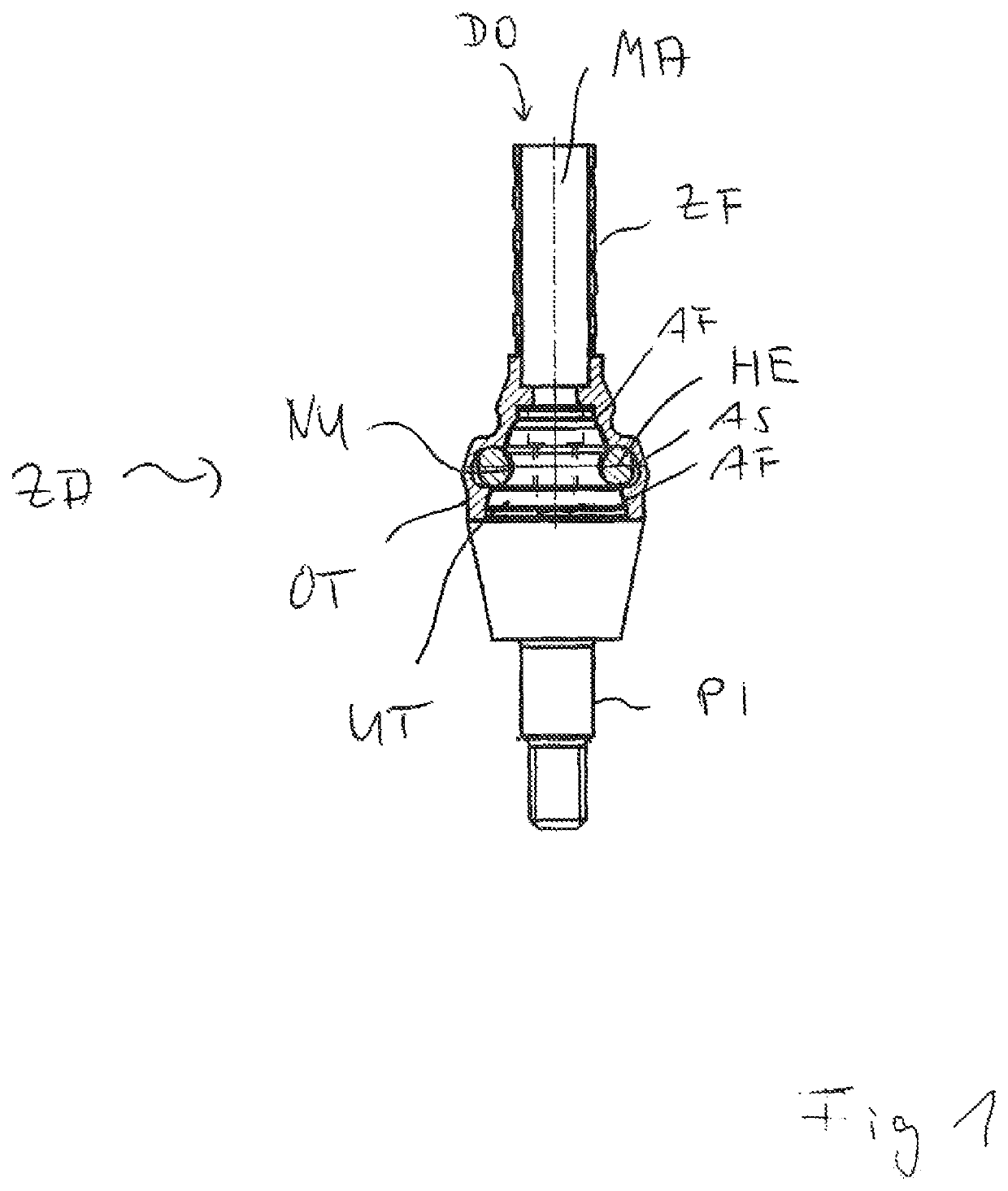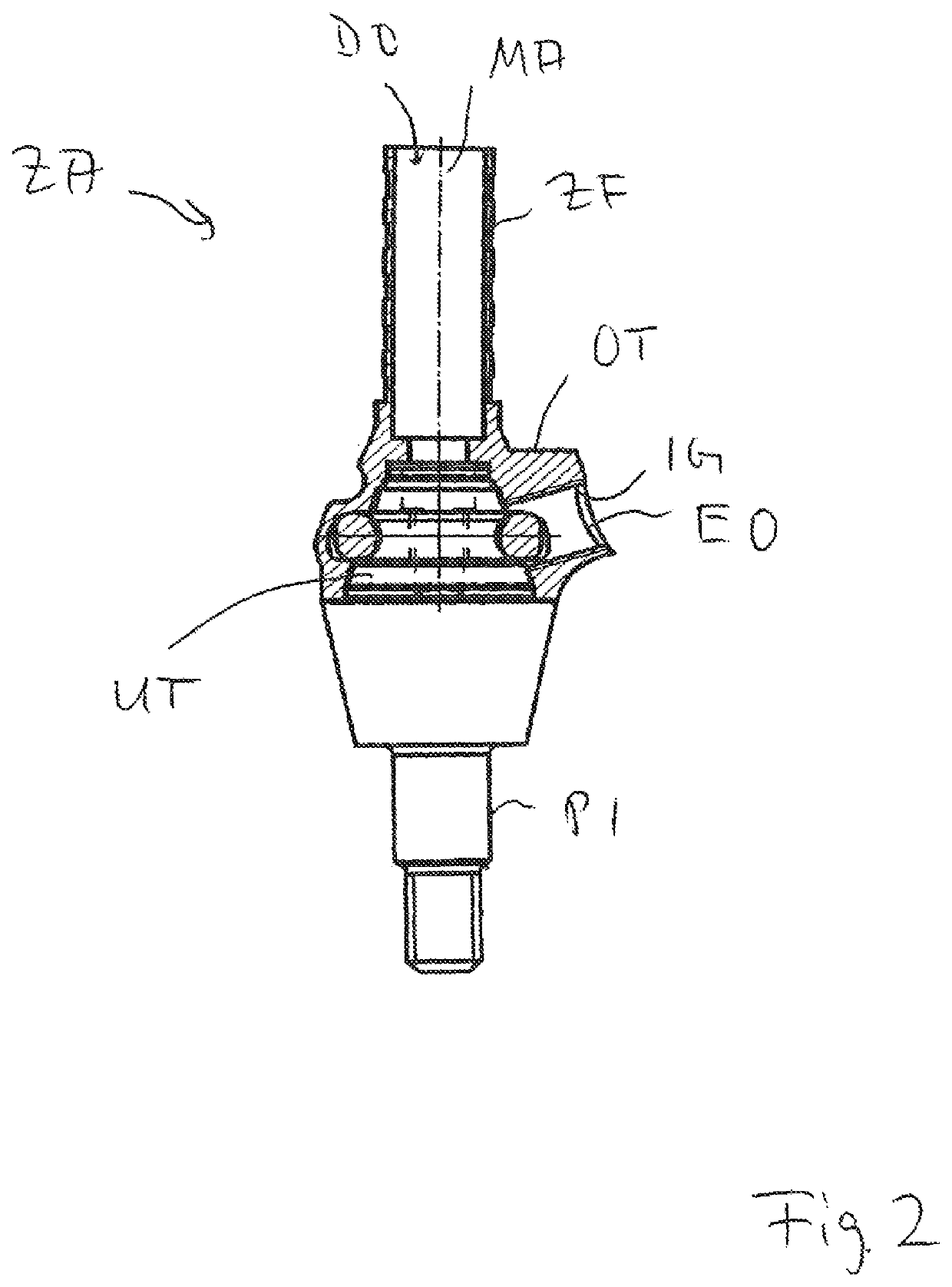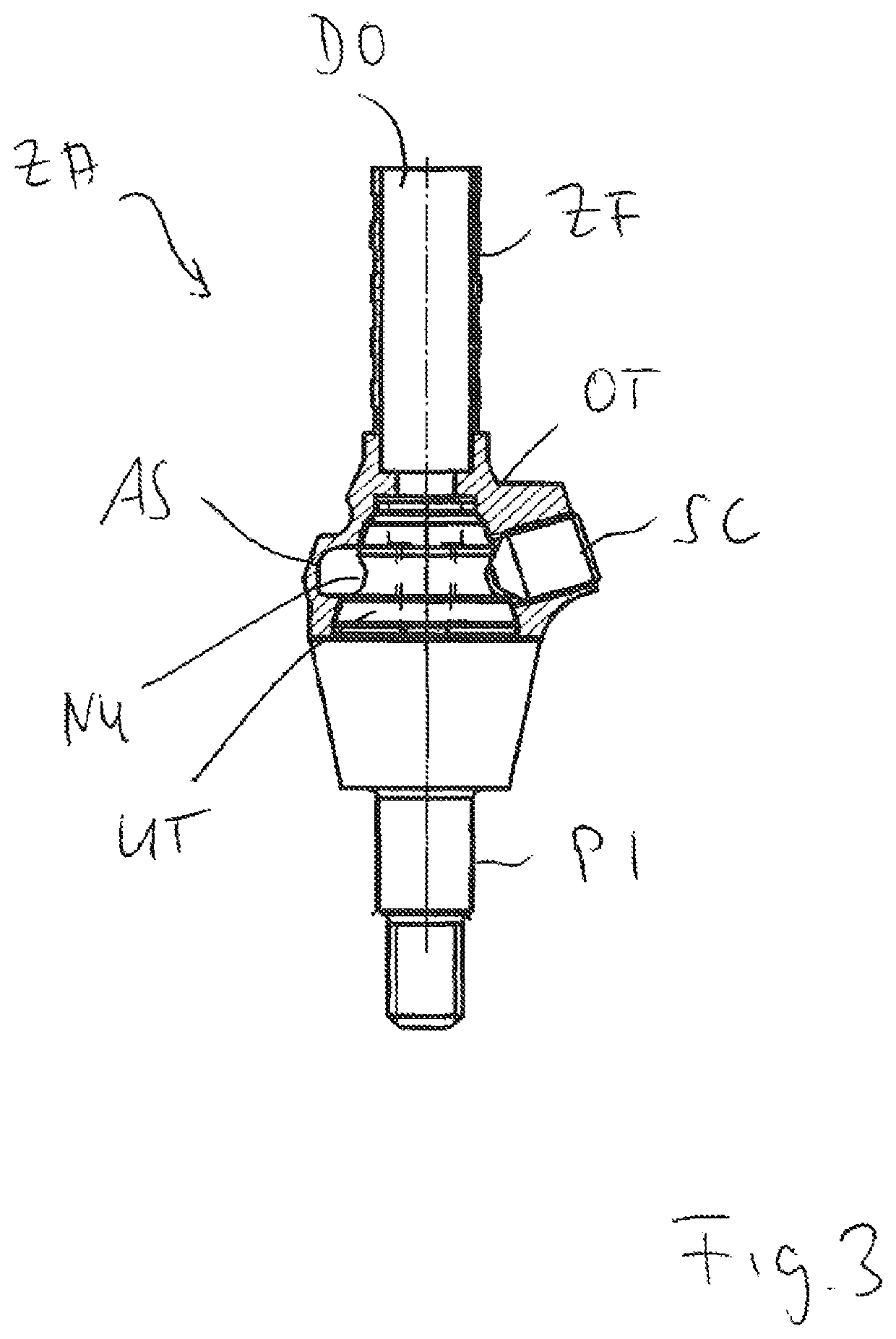Dental prosthesis arrangement
a technology for dental prostheses and prostheses, applied in dentistry, dental surgery, medical science, etc., can solve the problems of inability to carry out periodontal cleaning of tooth replacements with great difficulty or not at all, and the formation of biofilms on hard surfaces such as implants, in the oral cavity of the prosthesis wearer, is unavoidabl
- Summary
- Abstract
- Description
- Claims
- Application Information
AI Technical Summary
Benefits of technology
Problems solved by technology
Method used
Image
Examples
Embodiment Construction
[0053]In the figures, components that are the same or have the same functional effect are provided with the same reference symbols.
[0054]In FIG. 1, a first embodiment of the dental prosthesis arrangement ZA according to the invention is shown schematically in a side representation, partly in section. A lower part UT is applied to a jaw implant, indicated schematically with the reference symbol PI, which part is covered by an upper part OT. The upper part OT can be used as a superstructure body for a dental prosthesis not shown in FIG. 1. The upper part OT and the lower part UT together form a connection segment VA, so that the lower part assigned to the jaw implant PI and the upper part assigned to the superstructure are connected with one another. The lower part UT engages into the upper part OT along a center axis MA. The lower part UT is supported against the upper part OT at multiple contact surfaces AF. The lower part UT and the upper part OT are releasably connected with one a...
PUM
 Login to View More
Login to View More Abstract
Description
Claims
Application Information
 Login to View More
Login to View More - R&D
- Intellectual Property
- Life Sciences
- Materials
- Tech Scout
- Unparalleled Data Quality
- Higher Quality Content
- 60% Fewer Hallucinations
Browse by: Latest US Patents, China's latest patents, Technical Efficacy Thesaurus, Application Domain, Technology Topic, Popular Technical Reports.
© 2025 PatSnap. All rights reserved.Legal|Privacy policy|Modern Slavery Act Transparency Statement|Sitemap|About US| Contact US: help@patsnap.com



